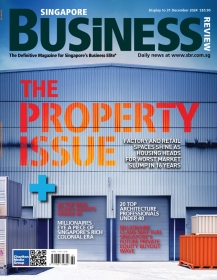Green concrete – an important innovation for resource-scarce Singapore
By Sujit GhoshSingapore has set a national target to get 80% of Singapore buildings to be ‘green’ by 2030. The term ‘green building’ refers to buildings constructed with environment-friendly materials, or energy-efficient features.
In a nutshell, green buildings consume less resources. And this means monetary savings, for the building owner as well as tenants. When the plan is fully implemented, Singapore can chalk up a total of $1.6 billion for energy consumption.
Singapore government has pushed the industry with various incentives and certifications through Building and Construction Authority (BCA). But it is equally important for the private sector to share its contribution this national green effort and spread the concept of sustainable construction to the wider public.
Environment-friendly concrete does not only cover concrete production using recycled materials from demolished buildings. It can be produced using other industrial by-products like blast furnace slag or incinerator bottom ash to replace partial cement consumption in production, and at the same time reducing landfill.
Also, the use of less raw materials or less concrete to build more building structures gives a “green” connotation to the buildings.
Now, coming to use of recycled materials. Some Singapore companies have started to use washed copper slag sand in concrete production in Singapore. Concrete with copper slag has additional positive features like higher heat resistance and denser structure.
Originally imported from Japan, copper slag is used as an abrasive material for removing rust and marine deposits from ships. This abrasive property deteriorates after a few repetitive uses. And when depleted, they were discarded, ending up as landfills.
400,000 tons of used copper slag needs to be disposed annually and this amount is only enough for a month of our concrete production. The supply is getting tighter now with all concrete suppliers using it after BCA authorizes its use in Singapore Standard (SS). Alternative materials often come from waste and hence its supply is limited and volatile.
Conwood is another noteworthy innovation in the industry. As a hybrid mixture of concrete and timber, it allow us to have a natural wood element in our without cutting trees and contributing to climate change.
Reaching out to the young minds
Looking ahead, Singapore Polytechnic has recently announced that it is finalizing the design for another stepped-up invention: producing concrete with algae.
Future solutions will continue to evolve; and it will be much more exciting, and environmentally sound. But to make it all happen, we must translate the benefits of green buildings to the end-users.

























 Advertise
Advertise






